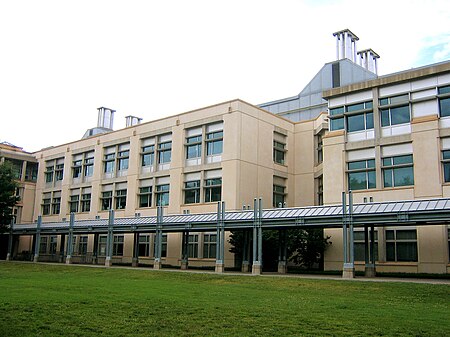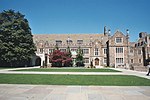Levine Science Research Center

The Levine Science Research Center (LSRC) is a 341,000-square-foot (31,700 m2) facility on Duke University's west campus located at 308 Research Drive Durham, NC 27708. The LSRC is currently the largest single-site interdisciplinary research facility in the U.S. Its classrooms are shared by several departments, but the majority of its offices and laboratories are utilized by the Nicholas School of the Environment, the Pratt School of Engineering, the Center for Cognitive Neuroscience and Developmental and the departments of Computer Science, Pharmacology and Cancer Biology and Cell and Molecular Biology. The building was named for Leon Levine, the CEO of Family Dollar Stores.
Excerpt from the Wikipedia article Levine Science Research Center (License: CC BY-SA 3.0, Authors, Images).Levine Science Research Center
Kent Street, Durham
Geographical coordinates (GPS) Address Nearby Places Show on map
Geographical coordinates (GPS)
| Latitude | Longitude |
|---|---|
| N 36.0045 ° | E -78.9419 ° |
Address
Duke University
Kent Street
27708 Durham
North Carolina, United States
Open on Google Maps






